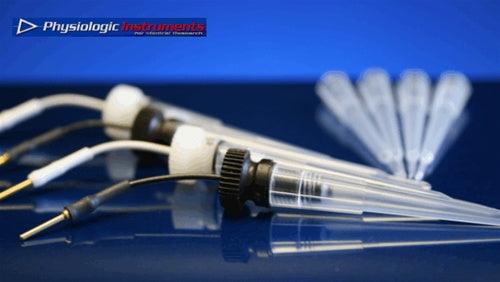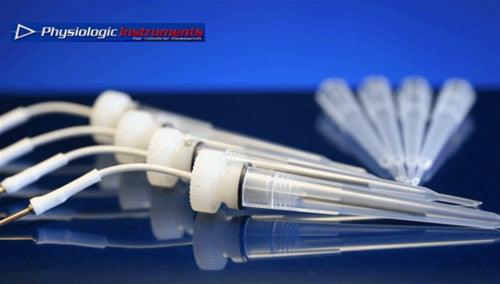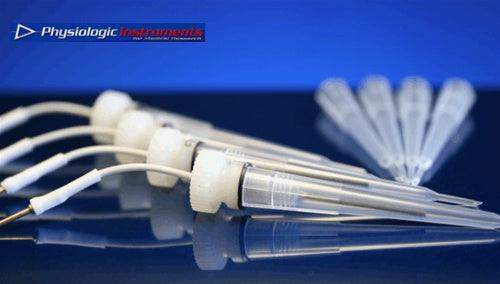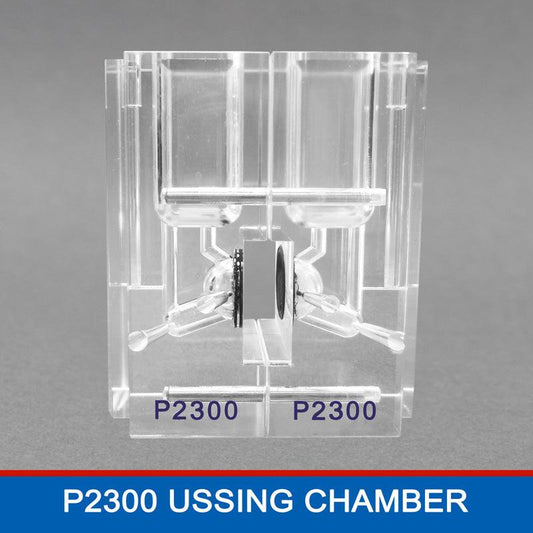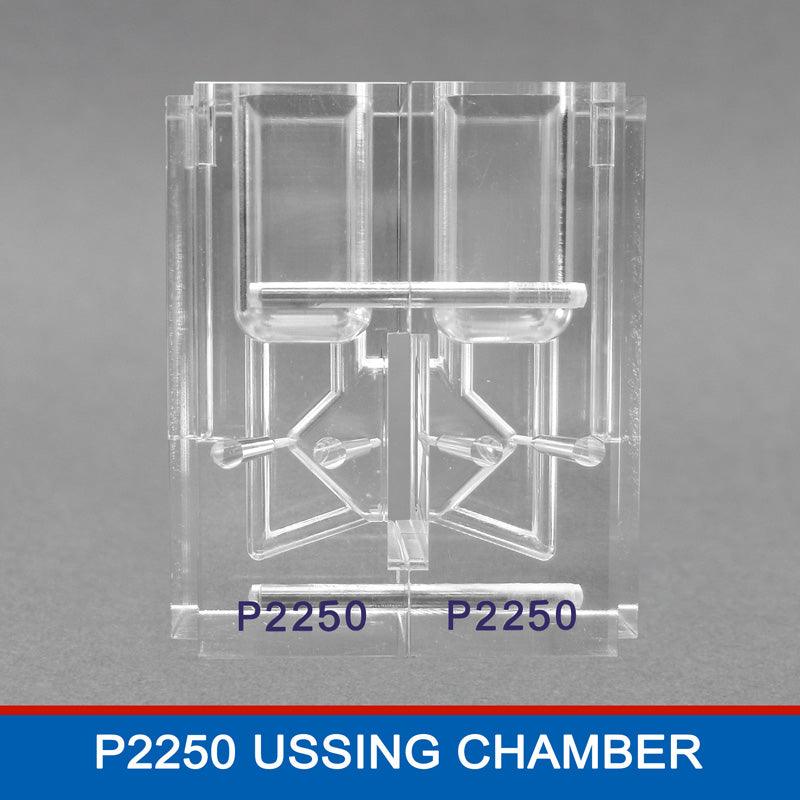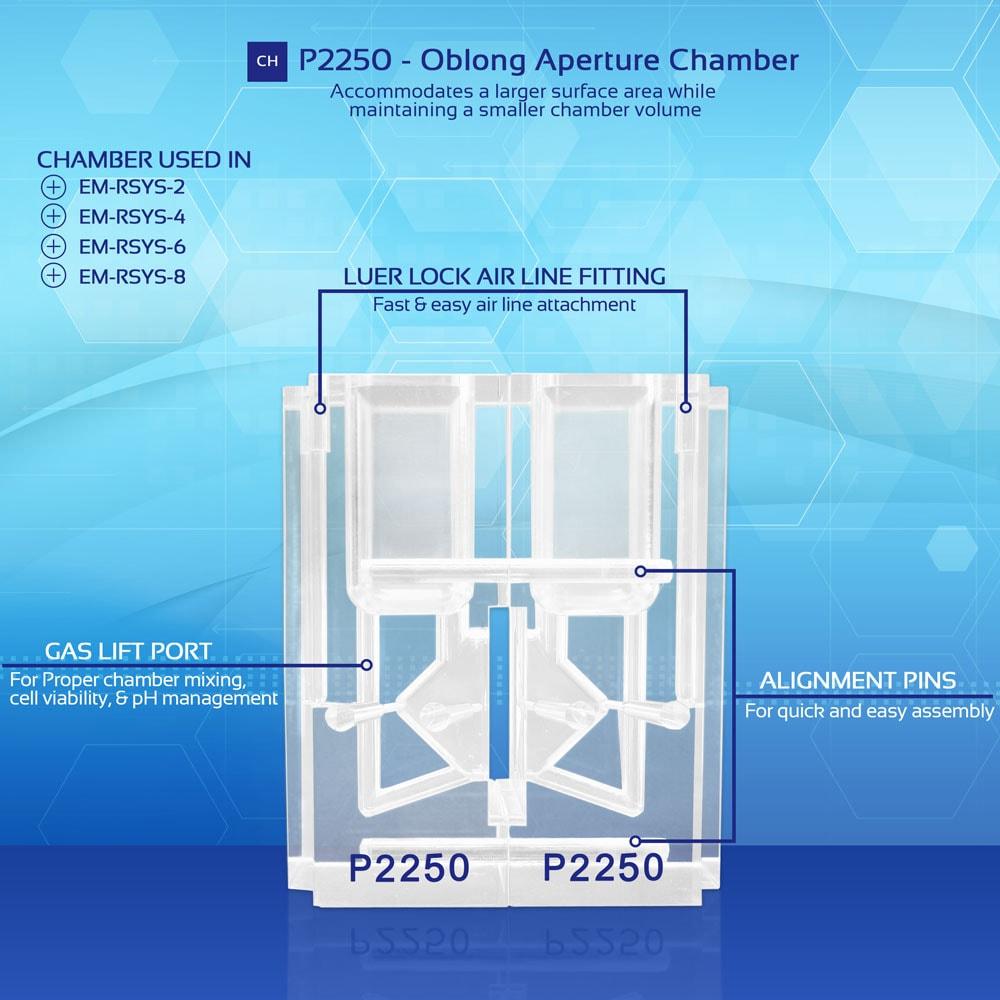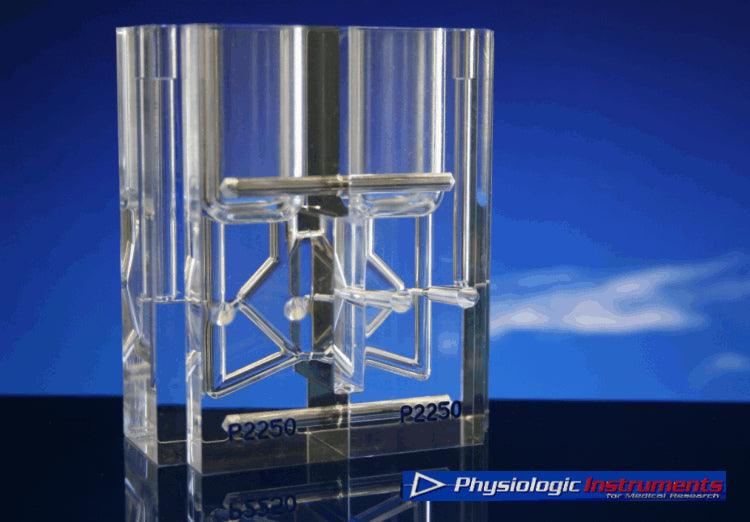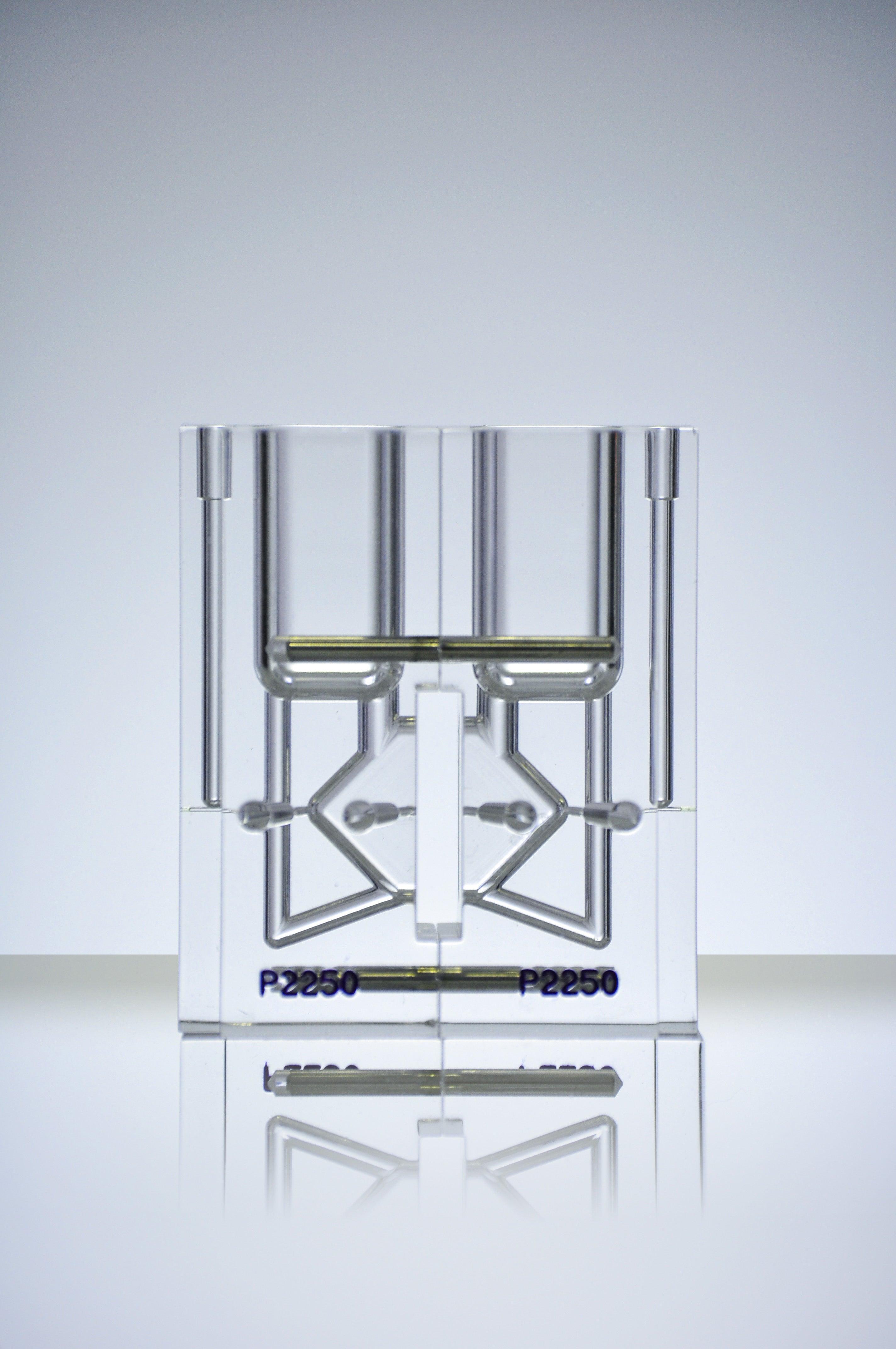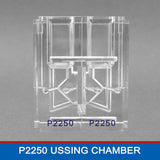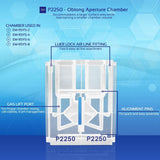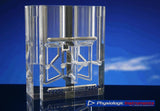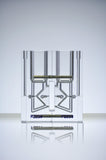EasyMount Ussing Chamber for Rat Tissue - Model P2250
The P2250 Intestinal EasyMount Ussing Chamber is a specialized research tool for studying transport and barrier functions in intestinal tissues, particularly from species like rats, guinea pigs, and rabbits. It features a custom EasyMount Ussing Chamber Slider (P2252) with a 5 x 22 mm oblong aperture, providing a 1.0 cm² area ideal for mounting intestinal samples securely and precisely. With a flexible usable half-chamber volume range of 2.0 to 8.0 ml, the P2250 is adaptable to various experimental protocols. Its design prioritizes durability, ease of use, and reliable data collection, making it a valuable instrument for gastrointestinal research.
⦿ To be used with EasyMount P2252 Chamber Slider Insert- Regular price
- $637.00
- Regular price
-
- Sale price
- $637.00
- Unit price
- per
EasyMount Chamber Details

EasyMount Ussing Chambers - Model P2250
The EasyMount Ussing Chamber is a specialized tool designed for researchers studying the transport and barrier properties of intestinal tissues, specifically for species such as rats, guinea pigs, and rabbits. Tailored to meet the unique requirements of intestinal research, the P2250 Ussing Chamber provides an optimal environment for mounting and analyzing delicate tissue samples. Its design ensures that tissue specimens are held securely and positioned accurately, allowing for high-quality, reproducible data that supports a variety of physiological and pharmacological studies focused on gastrointestinal functions.
One of the key features of this ussing chamber is its custom-designed EasyMount Ussing Chamber Slider insert, designated as the model P2252 ussing chamber slider, which is uniquely suited for mounting intestinal tissues. The P2252 Ussing chamber slider insert features an oblong aperture with dimensions of 5 x 22 mm, providing an effective area of 1.0 cm² for the tissue sample. This specific aperture design facilitates the proper alignment and placement of intestinal tissues, enhancing the consistency and reliability of measurements. By using this specialized slider, researchers can achieve a secure and standardized mounting process, critical for accurate assessment of tissue functionality.
The P2250 Ussing Chamber chamber also offers a flexible volume range, with a usable half-chamber volume of 2.0 to 8.0 ml. This range accommodates various experimental needs, giving researchers the ability to customize conditions based on the requirements of specific protocols. With a durable and easy-to-clean design, the P2250 Ussing Chamber is a practical, long-lasting choice for laboratories focused on intestinal research. Its thoughtful engineering and specialized components make this ussing chamber an essential tool for advancing studies related to intestinal health, absorption, and barrier properties.

Key Features:
-
Mounting Intestinal Tissues: This ussing chamber slider insert is specifically engineered for mounting intestinal tissues and features an oblong aperture measuring 5 x 22 mm, providing an effective area of 1.0 cm² for the tissue sample. The unique aperture design facilitates proper alignment and placement of intestinal tissues, which enhances the consistency and reliability of measurements. By utilizing this specialized slider, researchers can achieve a secure and standardized mounting process, which is critical for accurate assessment of tissue functionality.
-
Flexible Volume Range: The P2250 Ussing Chamber offers a flexible volume range, with a usable half-chamber volume of 2.0 to 8.0 ml. This versatility accommodates various experimental needs, allowing researchers to customize conditions based on the specific requirements of their protocols. This adaptability is essential for conducting a wide range of experiments in intestinal research.
-
Durable and Easy-to-Clean Design: In addition to its functional features, the P2250 Ussing Chamber is designed for durability and ease of maintenance. Its robust construction ensures longevity, making it a practical choice for laboratories dedicated to intestinal research. The easy-to-clean design further enhances its usability, allowing researchers to maintain a sterile environment for their experiments.

The P2250 Intestinal EasyMount Ussing Chamber is an essential tool for advancing studies related to intestinal health, absorption, and barrier properties. Its thoughtful engineering, specialized components, and flexible design make it a valuable asset for researchers focused on understanding gastrointestinal functions. By providing a reliable platform for mounting and analyzing intestinal tissues, the P2250 chamber supports the pursuit of high-quality research and contributes to the advancement of knowledge in the field of intestinal physiology.



